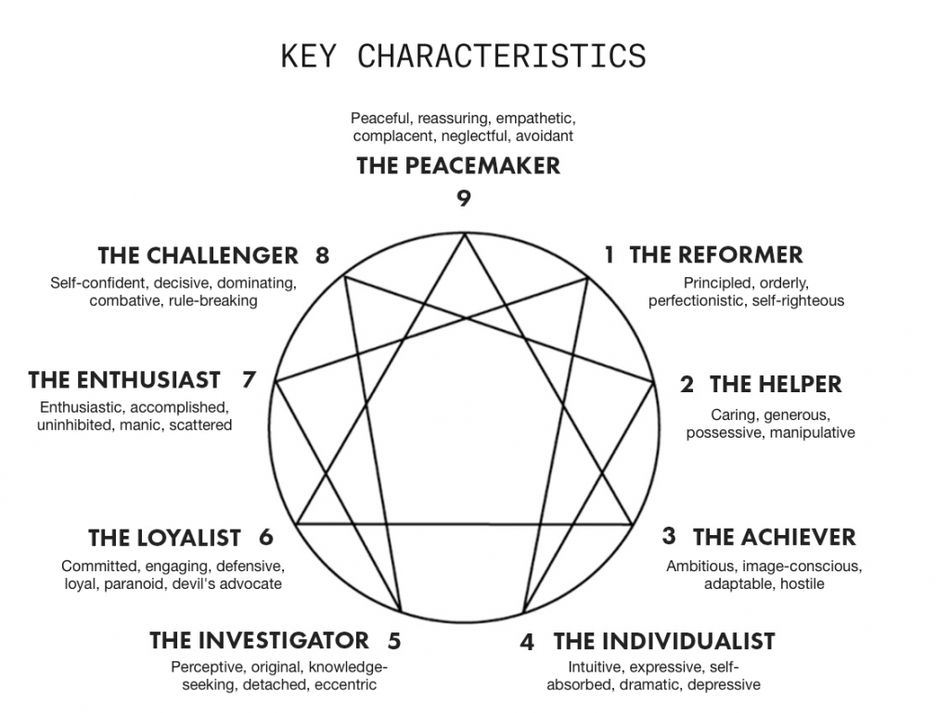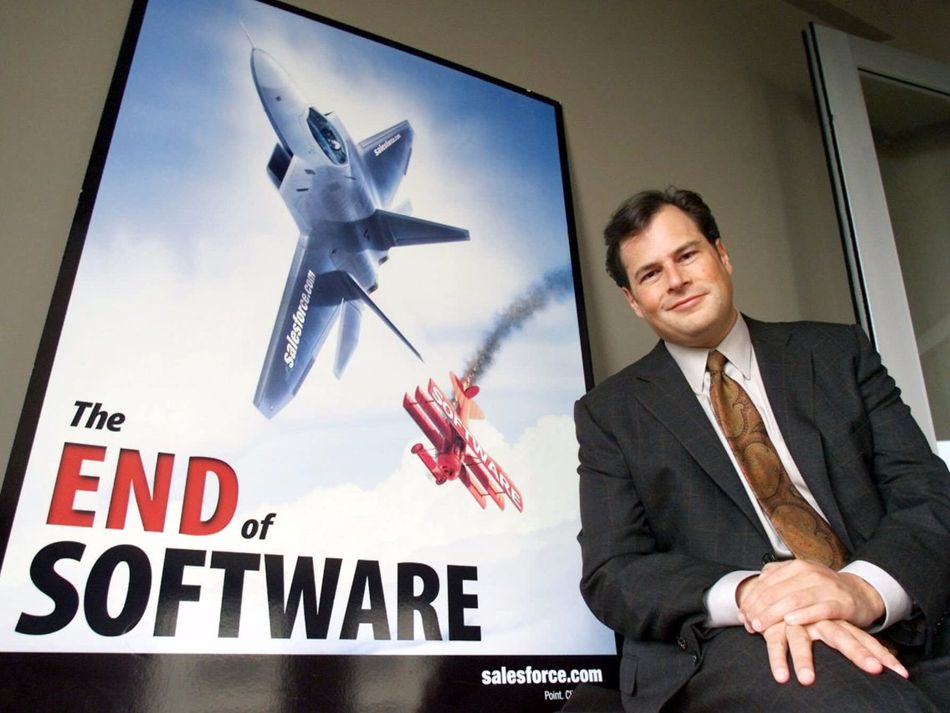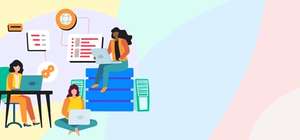
Get to know the 22 types of leadership from the 3 most common personality profiling tools.
To help you figure out your leadership type, we'll explain the 3 most common profiling systems or “personality decoder” tools:
- The Enneagram system of 9 personality types
- William Goleman’s 6 leadership style
- The Leadership Development Profile survey assessment created by Suzanne Cooke-Greuter and Bill Torbert.
The Enneagram system of 9 leadership styles
The Enneagram (from the Greek words “ennea” meaning nine and gram meaning something “written” or “drawn”) is a model of the human mind that uses 9 interconnected personality types. The exact origin of the Enneagram is unknown, but similar ideas can be traced back to the 4th century. Today the Enneagram has been adopted by many companies as a way to better understand and empower their teams. Tobi Lutke, the CEO of Shopify shared:
“Shopify is very partial to Enneagram, it has worked very well for us. In our internal system, you can see the Enneagram of everyone else, and it tells you what nuances, what means for how to work together…We want to find out what areas people have a fixed mindset on and try to get them to acquire a growth mindset.” (Source)
The model is represented by a nine-pointed graphic that represents the nine types of personalities:

The Enneagram map is grouped into three buckets of three based on the idea that humans process information through three forms of intelligence or “centers of intelligence”: the head, the heart, and the body.
- The head — responsible for thinking and analyzing
- The heart — accountable for our emotions
- The body — the center of sensing the physical
We use all three centers of intelligence, but one of these centers plays a dominant role in the expression of our personality.
The nine leadership styles as taught by the Enneagram:

Each of the nine types has three sub-types (for a total of 27 sub-types) that provide additional personality nuances to help you find your correct type with greater precision.
- Self-preservation
- Social
- One-to-One
”The three subtypes are defined by which of the 3 “instincts” is dominant. We all have all 3 animal instincts — for self-preservation, establishing social relationships, and the instinct for one-to-one bonding — that help us function in the world and keep us safe. And just as each person favors one center and one type within the center, we each favor one of these three instincts as kind of a “first line of defense.”
—Beatrice Chestnut, “The 9 Types of Leadership: Mastering the Art of People in the 21st Century Workplace”
1. The Reformer
As, the Reformer, these leaders are the principled perfectionists in the workplace.
- Self-preservation Ones are the true perfectionist of the nine types. They are self-controlled, often to the point of being overly critical of themselves. As perfectionists, they finesse every detail of their work.
- Social Ones have a teaching mentality and try to make things perfect for the world around them. They’re intellectual and noble. Famous examples of this subtype are Gandhi and Nelson Mandela.
- One-to-One Ones are usually the more impatient of the Reformers, often having a clear idea of how things ought to be done — they believe they know the right way. And while they might come off as critical, they mean well. For these Ones, learning to frame their feedback in a more constructive way is an area of growth.
2. The Helper
Type Two leaders project themselves as people-pleasers. They seek rapport and approval from the rest in the workspace.
- Self-preservation Twos are playful and charming, which is why people are so naturally drawn to them. Of the Helper subtypes, these Twos tend to be more wily and unrestrained.
- Social Twos earn the following of others by relying on their natural ability to influence. They like to take the lead and prove themselves as leaders among a broader audience
- One-to-One Twos are overly generous and can be codependent; they need to take care of everyone else. In working so hard to please everyone, these leaders may sometimes come off as overbearing. Offer these Twos help, and then offer a second time.
3. The Achiever
The Achievers, as the name implies, are focused on meeting goals and hitting business targets. They are hard-working, highly focused, and competitive.
- Self-preservation Threes are the hardest working of the Three subtypes. For them, it’s essential to be recognized as accomplished, but they avoid talking in a boastful manner. Self-preservation Threes are very often modest.
- Social Threes have a competitive edge and want to appear perfect in the eyes of others. In the workplace, they strive for validation from their employees and peers. They are self-assured and driven by targets. They work hard to reach their goals and climb the corporate ladder.
- One-to-One Threes are image-conscious and try to prove themselves by supporting others, sometimes at the expense of their own success.
4. The Individualist
The Individualists are creative and expressive.
- Self-preservation Fours may often come across as egotistical. But pause, and remember that while they appear strong on the outside, they are emotionally sensitive on the inside. This is their nature.
- Social Fours are emotionally sensitive. They compare themselves to others, believing they are somehow inferior. They express their emotional truth to connect with others and build relationships.
- One-to-One Fours have a penchant for comparing themselves to others, often casting a bad light upon themselves. Similar to Self-preservation Fours, they are emotionally sensitive. However, these Fours don’t hide it. They express their emotional truth to connect with others and build relationships.
5. The Investigator
The Investigators are knowledge-seeking and extraordinarily insightful. Of all Enneagram leadership types, this one is the most analytical and logical. But they are also the most likely to cut themselves off and fall into introverted tendencies.
- Self-preservation Fives, as extreme introverts, are more detached than the other subtypes. In the workplace, they often appear self-reliant, which stems from their perceived state of alienation. Remind them you’re here when they need you.
- Social Fives are the extroverted subtype of Investigators. They are incredibly knowledgeable and often become experts in their fields. Social Investigators are the type of people that you will find at conferences and events meeting with like-minded individuals and absorbing new ideas.
- One-to-One Fives are great listeners and conversationalists. They are the friendliest of the Five subtypes. They’re patient, curious, and very open to sharing their thoughts and feelings with their coworkers.
6. The Loyalist
Type six people are engaging, trustworthy, loyal, and committed leaders. Trust is of imperative importance for all Type Six subtypes. They are natural leaders.
- Self-preservation Sixes are friendly, genuine, and tactful; they stand by their coworkers and everyone they appreciate. However, they also tend to become anxious and fret when they feel unable to take care of themselves.
- Social Sixes can resemble Twos, as they’re concerned about other people’s opinions and do their best to fit in society. Social Loyalists tend to be extraordinarily dedicated and self-sacrificing to their cause or group.
- One-to-One Sixes are disciplined, and they project energy and physical strength. It’s no wonder they people find it easy to follow these leaders. They too, however, have fears and weaknesses (they just happen to be hidden behind to image of strength they project).
7. The Enthusiast
Enthusiasts tend to focus on the future, unconsciously moving away from the discomfort and problems of the now. They are optimistic and excited idealist of our workspace. They are adventurous and view life as a fun-filled game. But they also tend to be prolific achievers and practitioners. The multidisciplinary generalists on our teams are an example of Type Seven people.
- Self-preservation Sevens are the most pragmatic type of Enthusiasts. They are energetic and outgoing but also practical and ambitious. Aware of their tendency to get distracted by their brilliant ideas and future projects, this self-preservation type tends to take measured risks and plan carefully.
- Social Sevens tend to take responsibility for their team. They can be idealistic and sacrifice their personal goals for the greater good of a group or cause they believe in.
- One-to-One Sevens are the dreamers, the visionaries. They tend to distract themselves from the bland reality of their workday with the prospects of a better, optimistic future. That image of the future is one many others want to believe in.
8. The Challenger
Type Eight leaders are decisive and dominant. They employ courage, power, control, and justice to make an impact in the world. Following the beat of their own drum, they tend to break the rules.
- Self-preservation Eights get things done by being direct and self-assertive. They are straightforward business people with a low tolerance for frustration and disorder.
- Social Eights are remarkably protective of the people they care about. Social Challengers are the mentors of our world. Like the rest of the Challengers, they’re also defiant to authority, but they tend to be less confrontational than the rest.
- One-to-One Eights are the rebels of the 27 subtypes. They are passionate and contentious rule-breakers. They like to be in control, and they can get defensive when that control is threatened.
9. The Peacemaker
Type Nine leaders are peaceful, empathetic, calm, and compassionate. They are the pacifiers of our work environment. Peacemakers tend to focus on creating harmony and alleviate any tensions that may have arisen due to conflicts in the workspace. Maintaining positive feelings with others is a top priority for them.
- Self-preservation Nines tend to be the most passive of the three types. They find comfort in routine activities and align their behaviors and actions with their values and beliefs.
- Social Nines are always busy, moving, and working on things. They are easy-going and fun to be around. They love to get involved in group activities and working hard to support the common cause.
- One-to-One Nines care about the agenda and opinions of the others around them. They are less commanding and tend to be very understanding and accepting of others.
As you embark on the journey of understanding your leadership style, you may feel overwhelmed by all of the possible profiling methods and Enneagram leadership types. To make your life a little bit easier, let the FAST Enneagram Test guide you in finding your personality type by asking you 36 brief questions.
Additional resources and readings on the Enneagram system
- The 9 Types of Leadership: Mastering the Art of People in the 21st Century Workplace by Beatrice Chestnut
- The Road Back to You: An Enneagram Journey to Self-Discovery by Ian Morgan Cron and Suzanne Stabile
- The Enneagram in the Workplace: Better insight into yourself and others by Oscar David
Goleman’s 6 styles of leadership
Daniel Goleman, author of “Emotional Intelligence,” believes that leadership is a fluid practice that can be approached strategically.
Problems at work arise all the time. And like water adapting its shape to every form, Goleman thinks that executive leaders should adjust to different leadership styles as different situations and issues dictate.
The best leaders, according to Goleman, are skilled in four or more types of leadership and flexible enough to switch between styles to best serve the needs of a particular event.
In his report, Goleman introduces us to six leadership styles:
- The coercive style
- The authoritative style
- The affiliative style
- The democratic style
- The pacesetting style
- The coaching style

Each style works best in different situations and must be employed based on the goal that the leader is trying to achieve.
Let’s dive into the six types of leadership Goleman detailed.
1. The coercive style
The coercive style of leadership could be described as extremely autocratic. By using fear, bullying, and sometimes even humiliation, the coercive leader gets people to do whatever he or she tells them to do.
If it this style is to be assumed, it is best used in situations of crisis where a rapid turnaround is required.
To visualize the coercive style in practice, close your eyes and imagine Steve Jobs in one of his more less-than-thrilled moments.
Thought not especially forceful, Jobs demands immediate compliance when he has to get a conference room full of journalists to turn off their devices. This style provides speedy rewards but has adverse long-term effects on a team’s dynamics.
2. The authoritative style
Authoritative leaders are best at assembling teams towards a shared vision. This style is employed by the brave dreamers, fearless leaders, and change advocates of our times. The hallmark of the authoritative style leaders is their ability to change people's way of thinking. By defining a clear vision, the authoritative leadership type is used to pioneer new fields, create new product categories, and dominate markets. It also creates strong team spirit and employee satisfaction.
A prominent example of this leadership style is Marc Benioff, founder of Salesforce, who had the vision for a cloud platform in a time when the widely adopted industry standard was on-premise license-based software. What started with a well-organized stunt with the bold motto “The end of software” and a small team of product engineers ended up being one of the most used B2B SaaS products in the world today.

3. The affiliative style
In the affiliative style, people come first. Affiliative leaders are best at keeping people happy and creating harmonious work relationships.
This style promotes strong relationships as more important than business goals. Affiliative leaders are natural relationship builders; they use positive feedback and personal encouragement to create a loyal following in the workspace.
The affiliative style is best used when team morale is low, and team-building and bonding activities are needed.
A famous figure that exemplifies the affiliative leadership style is the retail magnate and investor Warren Buffett.
4. The democratic style
The democratic leader invests in getting to know people's opinions and ideas in order to build trust with them. He or she relies on collaboration and team communication to forge consensus in stressful situations.
While they have the authority to make the final decision, democratic leaders involve the whole team in the decision-making process. Employees are encouraged to participate in discussions, and their opinion is equal to the leader's opinion.
The democratic style may sound like the most balanced management style, but it has its drawbacks. One of the most vivid shortcomings can be endless meetings where questions are pondered to no end.
Jack Dorsey, one of the founders of Twitter, represents the democratic management style in business:
“Although Dorsey has returned in the role of executive chairman, Twitter remains minimalist and collaborative.
Both Dorsey and Twitter represent the new wave of democratic/participative leadership in business. Like Dorsey, Twitter has taken several years to find its compass.” — What is Democratic/Participative Leadership? How Collaboration Can Boost Morale
5. The pacesetting style
Like the coercive style, the pacesetting leadership style finds a place in the leader's arsenal but must be used with caution and in rare occasions.
A key characteristic of the pacesetting style is its “lead by example” mantra. The leader sets high work performance standards for the team and themselves. He or she is obsessed with getting results quickly at the expense of diminishing someone else's efforts and taking over their work.
Pacesetting leaders rarely provide clear guidance and expect employees to pick up tasks and concepts fast enough on their own.
Due to the lack of patience and direction from this type of leader, employees and followers feel pressured and morale quickly drops. The pacesetting style has an overall negative impact on the work climate and should be used sparingly.
6. The coaching style
Kenneth Blanchard and Paul Hersey in the late 1960s were the first to explain the coaching leadership style. Later, in 2002, Goleman documented the coaching style as the last of the six types of leadership.
The coaching leader acts more like a counselor and advisor than a traditional employer. He or she provides plentiful feedback and is good at delegating tasks and assigning challenging jobs to the team.
Unfortunately, Goleman writes, very few executives adopt the coaching style due to being pressured by the rest of their responsibilities and lack of time.
To become a great leader, learn many styles
Many reports, including the one from Goleman, indicate that the most seasoned leaders can switch between leadership styles. To create a positive climate in your work environment, you should learn and practice the authoritative, affiliative, democratic, and coaching styles. However, don't be intimidated by the idea of learning this many styles. Pick the one that you feel most beneficial or relevant to your current work situation and start practicing it.
Additional resources and Goleman’s leadership types
- Emotional Intelligence: Why It Can Matter More Than IQ by Daniel Goleman
- “Leadership That Gets Results” by Daniel Goleman
- Primal Leadership by Daniel Goleman
III. Leadership Development Profile survey assessment
This is the last personality decoder in our comprehensive guide on types of leadership.
Suzanne Cooke-Greuter and Bill Torbert have created the Leadership Development Profile framework. It is based on more than 40 years of research and a dataset of over 6,000 people worldwide.
According to Cooke-Greuter and Torbert, all people carry a mix of leadership styles. They believe what differentiates leaders is not their management style, personality traits, or philosophy of leadership. It’s their internal “action logic.”
In its core, the Leadership Development Profile is a survey of 36 open-ended questions. Participants are asked to finish phrases such as “A good leader…”
Participators can answer that question in different ways:
"A good leader should always trust their own intuition.”
“A good leader takes responsibility for their actions.”
“A good leader provides constructive feedback to their employees.”
Then, trained evaluators can assess which one of the seven developmental action logics functions as a leader’s dominant way of thinking. Those seven action logics include:
- The Opportunist
- The Diplomat
- The Expert
- The Achiever
- The Individualist
- The Strategist
- The Alchemist
The seven action logics give some reliable pointers as to the qualities and types of leadership capability an individual possesses. Like the rest of the personality styles described in this guide, all of the action logics have their benefits and drawbacks.
1. The Opportunist
The Opportunist is a capable manipulator. This segment is characterized by being deceptive, self-oriented, egocentric, and distrustful. Their goal in the work environment is to win in any way possible by exploiting other people as opportunities.
Few Opportunists remain managers and executives for long unless they grow into one of the more effective action logics.
2. The Diplomat
The Diplomat has a more positive impact on the work environment than the Opportunist, but it also has its shortcomings.
While the Opportunist seeks to control the behavior of others, the Diplomat is focused on controlling his or her own behavior.
Diplomats avoid overt conflicts and always strive to please higher management. They are conformists that follow the usual protocol and group standards.
3. The Expert
Leaders wielding the Expert action logic are on an endless mission to improve their knowledge, both in their professional and personal lives. They rule by logic and proficiency.
Experts are problem solvers and perfectionists. They accept only objective feedback coming from proven sources and other leadership experts and researchers.
Experts may struggle as managers, as they tend to think of themselves as always being right and are rarely open to feedback regarding procedures and/or strategies from subordinates. This is just another opportunity for growth.
4. The Achiever
Achievers are goal-oriented and success-focused. They're open to feedback and appreciate complexity and systems.
According to the research made by Cooke-Greuter and Torbert, 30% of people are identified as Achievers.
5. The Individualist
The Individualists are innovators of process. They have a fluid position in the workplace and are capable of assuming different roles in different circumstances.
People who have a dominant Individualist action logic are focused on themselves and less on business goals and plans.
Individualists are great communicators. They work through building strong relationships with people from the other action logics.
6. The Strategist
The Strategist is proficient in creating personal and organizational transformations by connecting different action logics to a shared vision which builds confidence.
They understand the importance of principles, contracts, theories, and judgment. Strategists are great conflict-alleviators and handle team friction and concerns very well.
7. The Alchemist
Alchemists are adept at seeing the future big picture in the organization. Their hallmark is the ability to create social transformations and reinvent their companies.
The Alchemist is good at dealing with immediate tasks while never losing sight of long-term goals. They're able to participate in historical transformations of their companies, creating symbolic analogies that speak to people's hearts and minds to increase potential.
How to grow as a leader
Perhaps the most important finding from the research done with the Leadership Development Profile survey is that all of the action logics function as stepping stones. Leaders tend to evolve from one strategy to another, like students. Different personal and work events can evoke that transformation: a promotion, changes in managerial practices, changes in the structure of the organization, etc. Incorporating improvements from failures and mistakes is essential for an effective leader.
More resources on the Leadership Development Profile survey
- The Leadership Development Profile by Cleaveland Consulting Group, Inc.
- “The 8 Most Common Leadership Styles & How to Find Your Own”
What type of leader are you?
In this post, we explored the three most popular personality tools: The Enneagram system, Goleman's leadership styles, and the Leadership Development Profile survey. Use this study as a navigational map into the world of leadership.
Don't feel discouraged if this all feels unknown and overwhelming at first. In the words of Benjamin Disraeli, “To be conscious that you are ignorant of the facts is a great step to knowledge.” Simply start by choosing the one system that resonates with you.
We’d love to know which of the 22 leadership types is yours? Share your answer with us on Twitter at @RangeLabs.
Some people are simply born leaders.
That's at least how it appears standing on the outside looking in at that peer who seems to just get it.
They're confident, intelligent, insightful, influential, purpose-driven, and they know how to rally support, and have a winning approach to leadership.
But most of us possess most of those characteristics. So what gives?
Which factors of leadership effectiveness leads to optimum team performance?
Leadership is a long-term discipline, a process that takes time. This learning process starts by first better understanding ourselves and then understanding what makes different people different types of leaders successful.
Daniel Goleman, the famous psychologist and author of Emotional Intelligence and many Harvard Business Review articles, has a knack for turning scientific data into manageable life lessons.
According to Goleman, two key ingredients make a great leader:
- Emotional intelligence: the ability to recognize, understand, and manage our own emotions and the capacity to empathize with the people around us
- Self-awareness: the ability to have mindful knowledge of our own character and the reasons behind our actions
In other words, mastering the art of leadership depends on understanding our own personality.
“Becoming a leader is synonymous with becoming yourself. It’s precisely that simple, and it’s also that difficult.”
That quote was said by Warren Bennis, the person widely recognized as the pioneer of the contemporary field of leadership studies.
Unconscious leaders do the things they do automatically, following the habitual practices that have worked before. They aren’t very self-aware and are therefore more susceptible to cognitive biases.
Seasoned leaders, on the other hand, are conscious of their actions and operate from a state of mindful awareness. They have a pragmatic approach to solving problems and reward people according to merit. When dealing with challenges, they let go of their egos and habitual patterns and open up to external feedback. Their leadership skills display much creativity.
The first practical step on your growth journey as a leader is to understand your leadership style and strengths. But no matter where you are starting from as a leader, you can get better if you increase your level of self-awareness.
What is your leadership style?
There are many different leadership types and approaches to leadership profiling. Unfortunately, each tool can only offer a limited perspective on what is a sophisticated matter—the way we behave and interact in the workplace.








